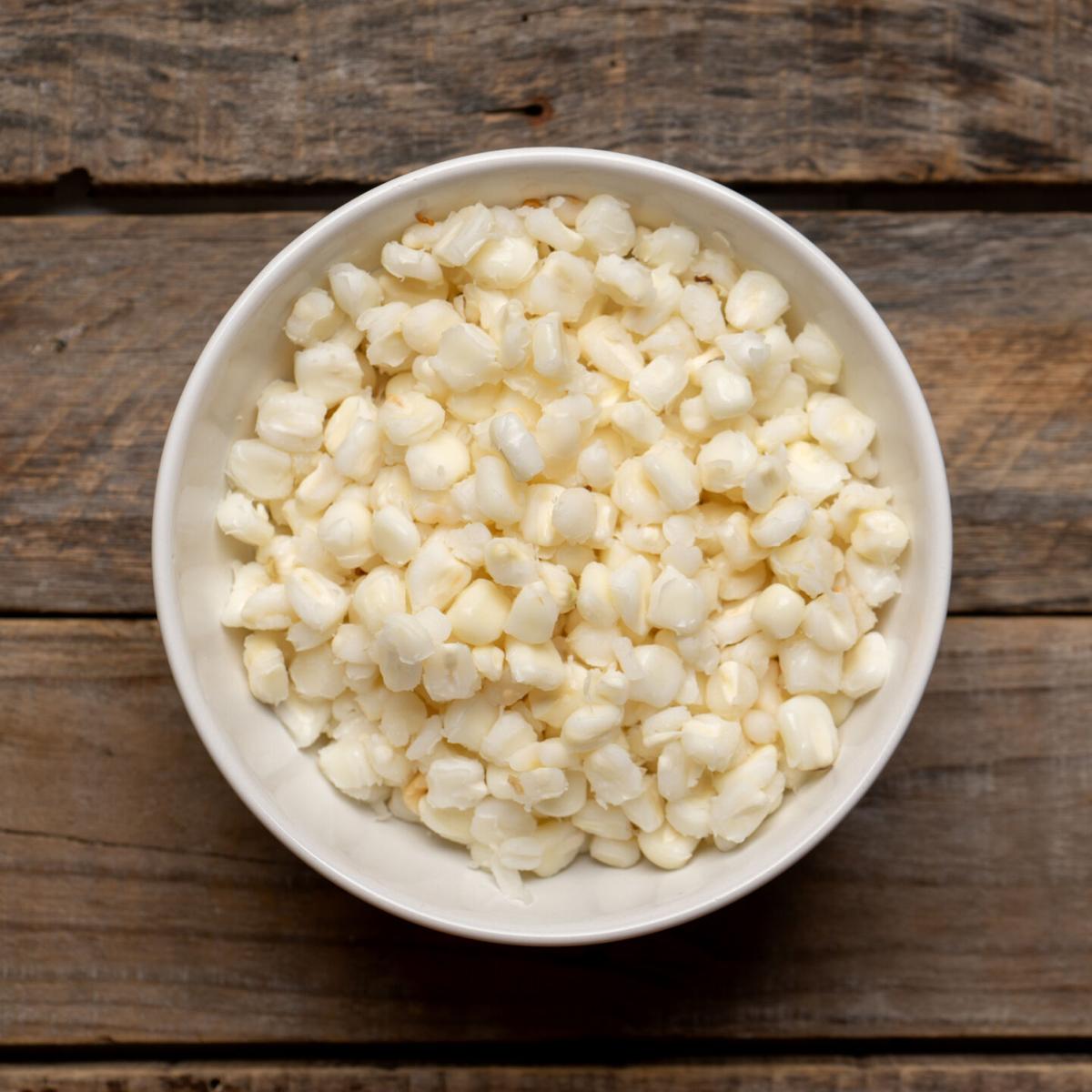Sometimes what your palate wants isn’t in sync with the season.
I woke up the other day with a hunger for posole, the classic soup of hominy, pork or chicken, and a lot of highly-flavored garnishes. My palate wanted posole’s flavors, but I didn’t want its satisfying goodness. Too steamy outside for a hot soup for supper.
Over the course of the day,
I tried to dissuade my palate about the posole. I suggested a variety of other dishes — chilaquiles, enchiladas, tostadas — but my palate held firm. Posole or nothing, it said, its little arms crossed firmly across its tiny chest.
Well, all right then. I’d satiate my palate’s hunger in another way.
You may not keep a can of hominy on hand, but I do. Sometimes I like a bowl of buttered hominy enlivened with lots of cracked pepper for dinner, and I never know when that hunger will hit. So there’s always a can stashed in my pantry somewhere.
Hominy, of course, is nixtalmalized corn — dried corn kernels that have been simmered and soaked in alkaline water, usually calcium hydroxide or slaked lime, so the hard outer shell slips off. I’ve nixtalmalized my own corn kernels in the past, as a culinary experiment; it’s not hard to do, but it is time-consuming.
If the nixtalmalized kernels are kept whole, they’re hominy. If they’re ground into a paste, they’re the beginning of masa for tortillas or other uses. Either way, the process makes the vitamin B in corn bio-available, which is why both ancient and contemporary cultures that nixtamalized corn can virtually live on it without the illnesses that follow a B-vitamin deficiency.
One of those ailments is pellagra, endemic in the Deep South before scientists realized that the Southern pork-and-corn-based diet failed to provide essential B-vitamins, especially niacin, and the amino acid tryptophan.
By comparison, the beef-and-wheat-based diet in the North provided those essential nutrients. The stereotype of Southerners as slow-moving and slow-talking probably comes from the prevalence of pellagra throughout the South before World War II.
All of that is a culinary diversion, it’s true, but I’m eternally fascinated by the ways that ancient cultures somehow knew how to do something to their food that makes it more nutritious. How did Mesoamericans figure out, more than 3,500 years ago, that nixtamalizing their corn kept their people healthy? Or were the health benefits ancillary to the improved texture of the dried corn that nixtalmalization provides?
To please my palate’s intemperate appetites, I devised this deconstructed posole salad. Because I’d found a jar of jumbo lump crab meat at a deep discount, I used that. But you could substitute the more traditional posole meats of shredded pork, chicken, or beef if you had one of those on hand. And although it’s completely non-traditional, I think smoked fish, flaked, would work well here. I’ll try it soon with the smoked trout I spied in a local market.
The dressing for this salad is lively with heat from a chopped chile and refreshing because of its citrusy base. If you’re one of those people who simply can’t abide cilantro, you could use a mixture of parsley and other herbs instead.
This was a fine supper on a steamy evening, and I have my insistent palate to thank for it.





